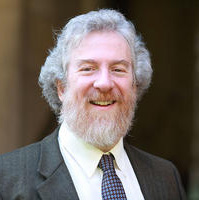Our God and God of Our Ancestors

Many prayers begin with the words “Eloheynu v’Elohei avoteinu” (Our God and God of our ancestors). I hear from so many people that these words are difficult, and an impediment to finding a pathway in Jewish prayer. The word God raises an array of difficulties: people who are inclined to the view “I don’t believe in God” might rightly feel that there is no integrity in addressing their words to God, an entity in whom (or Whom) they do not believe. Others find no security or support in the prayers and traditions of their ancestors, and say Fiddler on the Roof (“Tradition!”) is not enough.
Let me offer a two-part approach to these words, drawn from the teachings of the Hasidic masters. The story is told:
In the town of Berditchev, the home of the great Hasidic master, Reb Levi Yitzhak, there was a self-proclaimed, self-assured atheist, who would take great pleasure in publicly denying the existence of God. One day Reb Levi Yitzhak of Berditchev approached this man and said, “You know what? The God you don’t believe in—I don’t believe in that God either!”
There are simple understandings of God that we teach to children, and if a growing person has no chance to develop his or her vision of God from the “model” learned as an 11-year-old, as an adult that model may well—reasonably—be rejected. Rabbi Arthur Green’s book, Seek My Face, Speak My Name offers a beautiful, lyrical, and profound way to explore contemporary understanding of God. At JTS, we know that our rabbis and cantors would be filled with joy to explore the concepts of God with any member of the Jewish community.
A teaching of the Baal Shem Tov, (the founder of Hasidism):
Why do we begin prayers with the words “Our God and God of our ancestors?” Because when we say “Our God” we engage our own beliefs, our own explorations—and there may be a weakness, for our beliefs change, they may lack security. When we say “God of our ancestors” we connect to the past—which is unchanging, but may not be real for us.
Putting these together connects our past to our present, and offers greater strength.
There are many metaphors printed within our prayer books, and written upon our hearts. The journey of Jewish prayer seeks to bind together the past and the present, the printed and the spontaneous.
As always, I am interested to hear comments and reflections on these thoughts about prayer and liturgy. You may reach me at sabarth@jtsa.edu.



